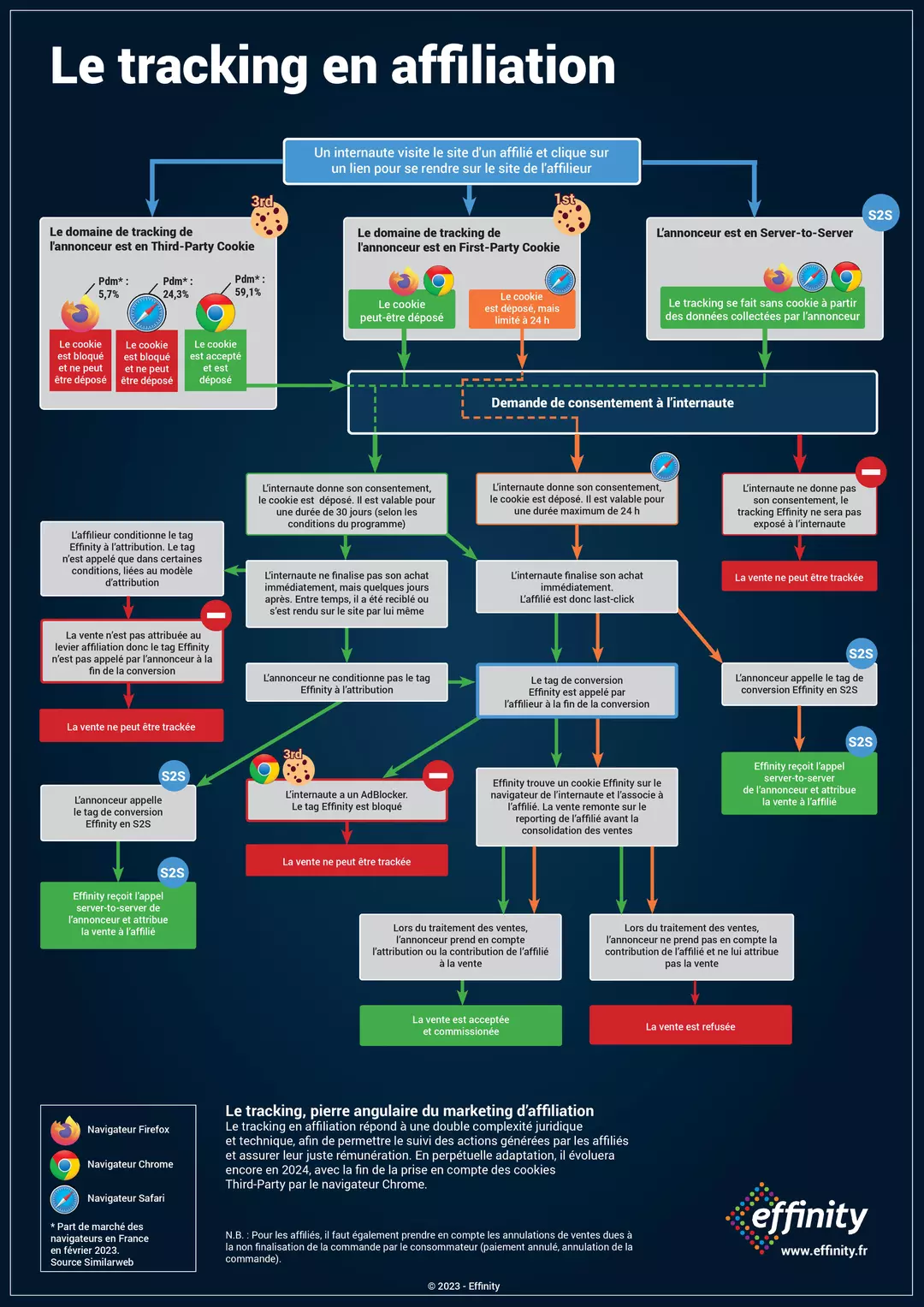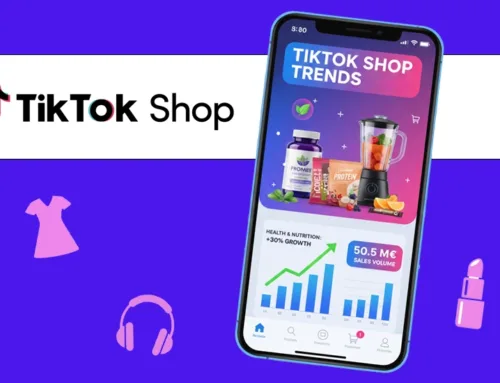Are the voices of affiliate tracking impenetrable? Not anymore! We’ve asked our experts to draw up a precise map of the tracking systems implemented by our platform. The aim was to shed light on the reasons behind the sometimes substantial discrepancy between the number of conversions generated by publishers and those actually counted by advertisers for the purposes of calculating their remuneration. Here are some explanations.

Tracking, the cornerstone of affiliate marketing
Tracking the actions generated by affiliates is at the heart of affiliate marketing. It is by tracing the operations carried out by Internet users, from the publisher’s site to the sale on the merchant’s site, that it is possible to ensure that the affiliate is fairly remunerated for the contribution made. Over the years, such tracking has become increasingly complex, with the multiplication of “white zones”, in which it is no longer possible to track the actions of Internet users. Depending on the browser used by users and the tracking system proposed by advertisers, there are a multitude of possible conversion paths, and not all of them lead to remuneration for publishers! As a result, the discrepancy between sales generated and those measured can be as high as 50% in the most extreme cases (i.e., the rare cases where all the obstacles are combined: poor browser, poor tracking system, etc.). A situation that undermines the virtuous ecosystem offered by affiliation, which is based on a relationship of trust between advertisers, publishers and the affiliation platform, and which guarantees fair remuneration for the business brought in.
The reasons for the complexity of affiliate tracking
The causes of this complexity are twofold. Legal, first of all. The obligation to obtain Internet users’ consent to the deposit of cookies*, in order to comply with the RGPD (since April 2021), is a first stumbling block. An estimated 20% of “buyer” Internet users refuse tracking on the web. A refusal that makes their purchases “invisible” and for which the publishers who contributed to the sale will therefore not receive any remuneration. Technical. The decision by Safari and Firefox browsers to block Third-Party cookies (which are too intrusive), which will also be the case for Chrome from 2024, and for Safari to limit First-Party cookies to 24 hours, have also made tracking affiliate sales particularly complex. Added to this are AdBlockers, which also “erase” the path taken by Internet users… And this is no mean feat, since according to a PageFair study, 41% of Internet users aged 16 to 29 use AdBlockers, and 15% of those over 60.
An infographic to change the relationship between advertisers and publishers
At Effinity, we’ve decided to put the spotlight on affiliate tracking so that all stakeholders – advertisers and publishers alike – have the clearest possible view of what’s really going on, and can act accordingly. Advertisers whose tracking systems are still dependent on Third-Party cookies (around 20% of the 600 advertisers on our platform to date) only track Chrome users. They therefore have no visibility of the 30% of traffic represented by the Safari and Firefox browsers. And so they don’t pay the publishers who generate sales from this traffic. With this infographic, publishers have a means of raising advertisers’ awareness of the need to move towards a more efficient tracking mode. They can also negotiate compensation for untracked traffic that nonetheless generates sales. For several months (or even years), Effinity has been encouraging advertisers to move towards a more efficient tracking system, such as the First-Party cookie in domain name delegation or server-to-server. This is essential if they are to continue to attract and retain publishers with their affiliate programs, while ensuring that their contribution is fairly remunerated. With this in mind, Effinity will soon be displaying the tracking mode used by advertisers on its affiliation platform. This will enable each publisher to make an informed choice as to which advertisers to work with. In conclusion, affiliation has adapted perfectly to the major changes in its environment. The end of the third-party cookie, which some associated with the end of affiliation (!), is becoming a thing of the past. And provided that advertisers set up the right tracking systems, affiliation remains an attractive, high-performance model that continues to play its primary role: enabling a variety of partners to monetize the (free) services they provide to web users during their purchasing journey. You can download the infographic in large format by following this link: Infographie tracking en affiliation. You can also read the Journal du Net article, “Infographie : les points de blocage techniques du tracking en affiliation“, featuring testimonials from Matthieu Wolf, Business Development Director at Le Parisien, and Christophe Bosquet, President of Effinity. * A reminder of the different affiliate tracking methods
- First-party cookies are deposited by the same domain as the site being visited, and are used to store a user’s preferences, log-in information, etc.
- Third-party cookies are deposited by a domain name other than that of the site visited, and are used to enable the sharing of information about an Internet user between different sites.
- Server-to-server tracking transmits Internet user tracking information from server to server. This system does not track the surfer, only his or her origin. There is therefore no deposit in the browser.
Mis à jour le 23 January 2025
Mis à jour le 23 January 2025



